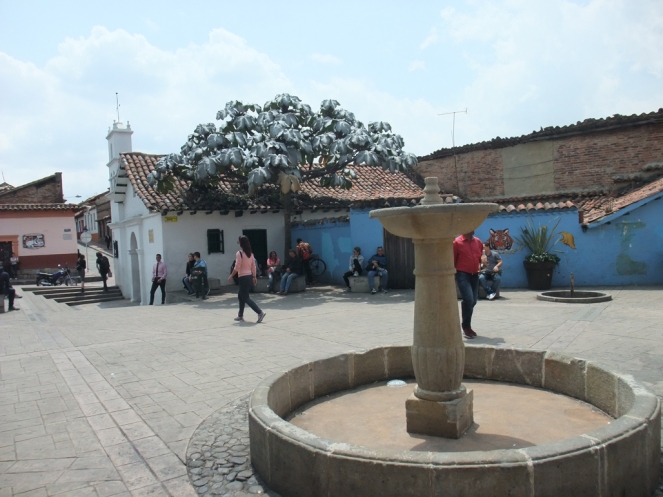
El Chorro de Quevedo is another square in La Candelaria neighbourhood, that is also significant to the history of Bogotá. Some historians say (although there are no documents to prove it) that it was in this square that Gonzalo Jiménez de Quesada (the Spanish explorer and conquistador), tired of traveling from Santa Marta and after battling the Muisca, decided to found a city. In 1832 it was acquired by Augustinian father Quevedo and he installed a public water fountain in the square. It stopped working in 1895, when a wall collapsed and destroyed the source. In 1969 the square was reconstructed, based on some old images and a pool was installed.
The cobbled square is much smaller than Bolívar Square and has a very different feel to it. It is a colourful, vibrant, energetic place full of street performers, travellers and students. You enter the square via the Callejón del Embudo, which just adds to the charm of the place.

The Callejón del Embudo (Funnel Street) is named after its shape.
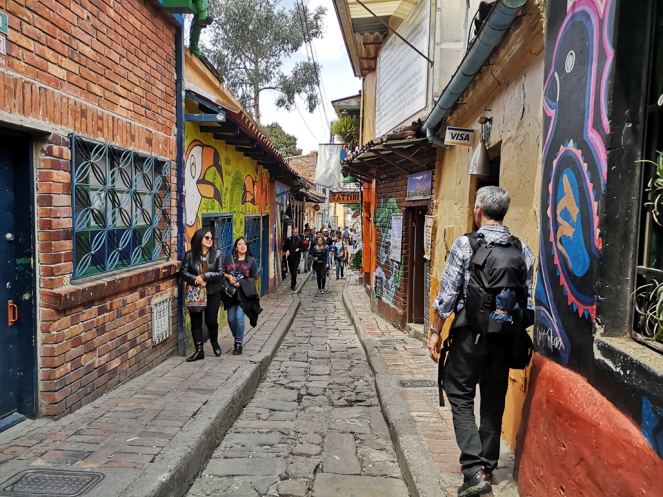
It is wide at the top part and narrow at the bottom and is one of the oldest streets in Bogotá.

It is a place where there is a high concentration of street art along the walls, houses and alleys, especially depicting more primitive, pre-Columbian art.
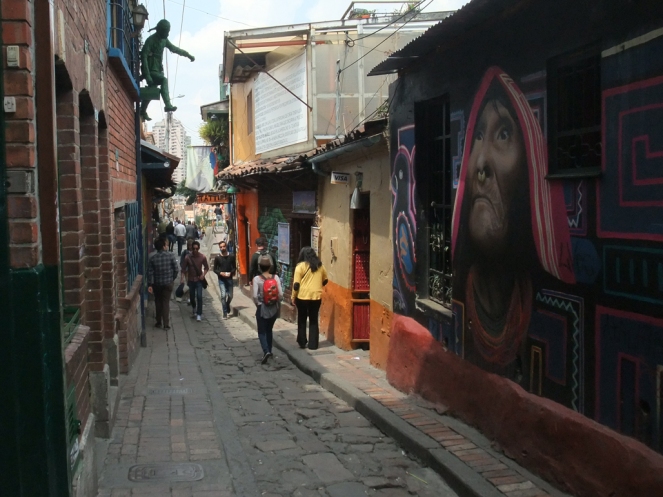
It has the famous “Native Woman” mural there too.
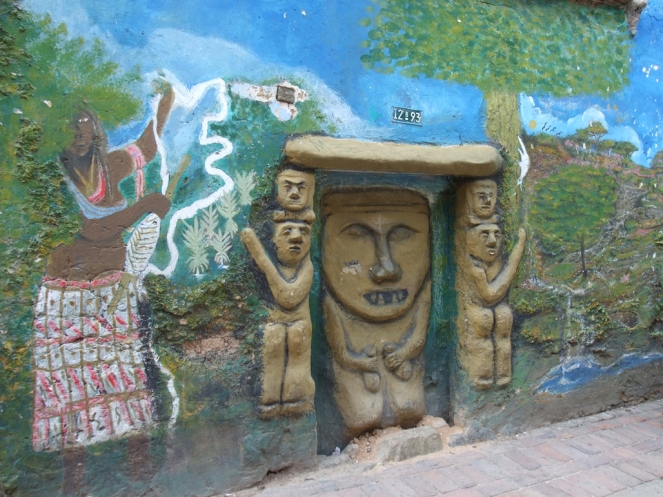
We were told that 90% of the population in Colombia is Catholic, however in 1991 the Roman Catholic Church was abolished as state church and more recent surveys show that only an estimated 70% of the national population are nominal Catholics and only 25% practicing Catholics. The change in the Constitution has changed the relationship with indigenous peoples, but the damage that the Catholic church did, deliberately setting out to destroy the Muisca religion, has left deep scars.
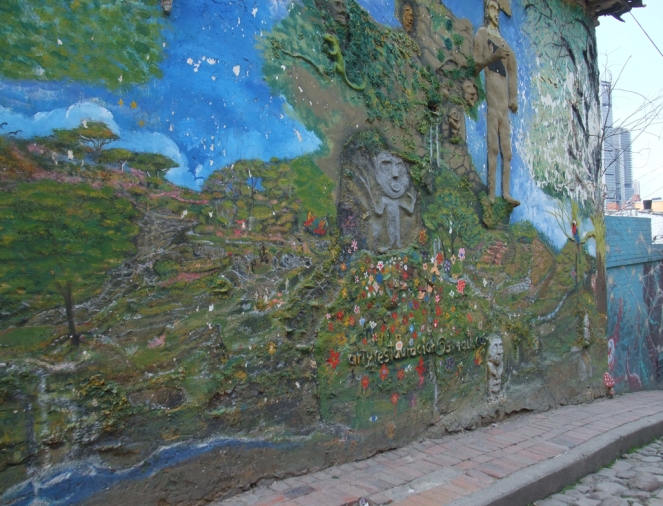
It is a complex situation and the street art touches on some of those issues.
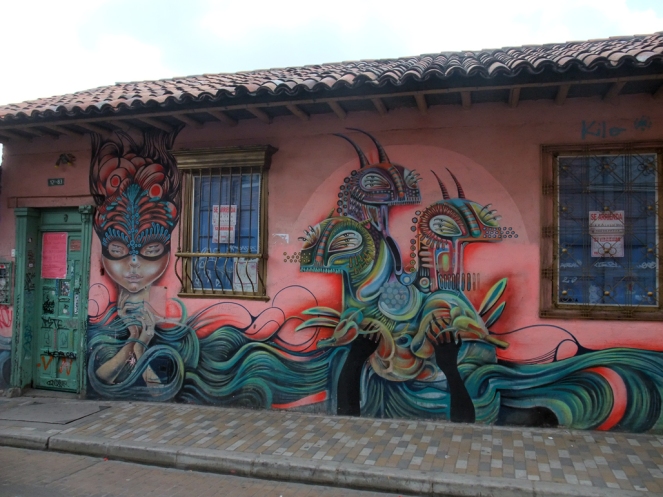

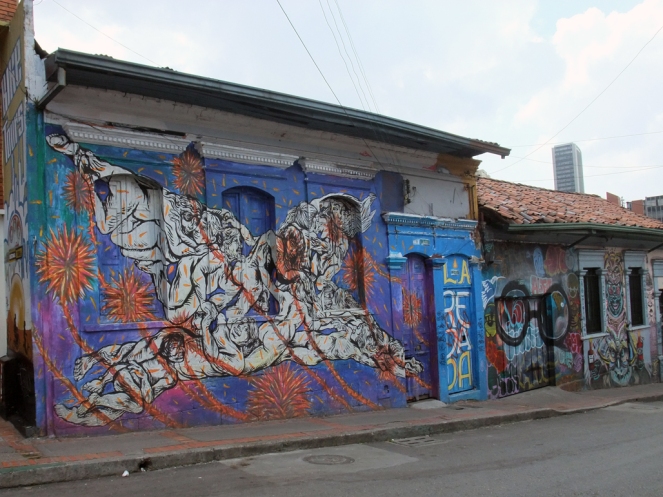
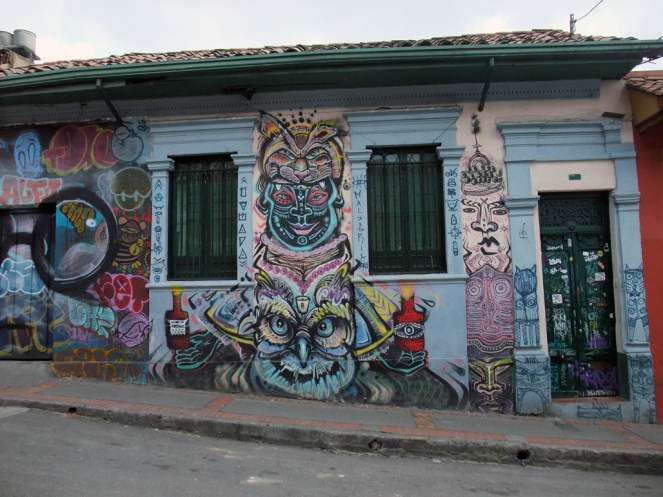
The indigenous population is now just 3.5% of the total population of Colombia, but they have had a major impact on the history and culture of the country.